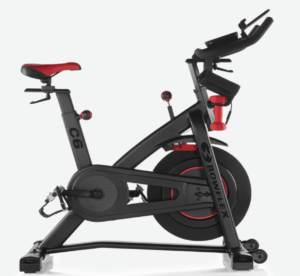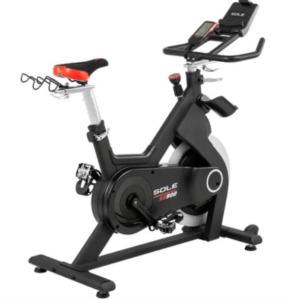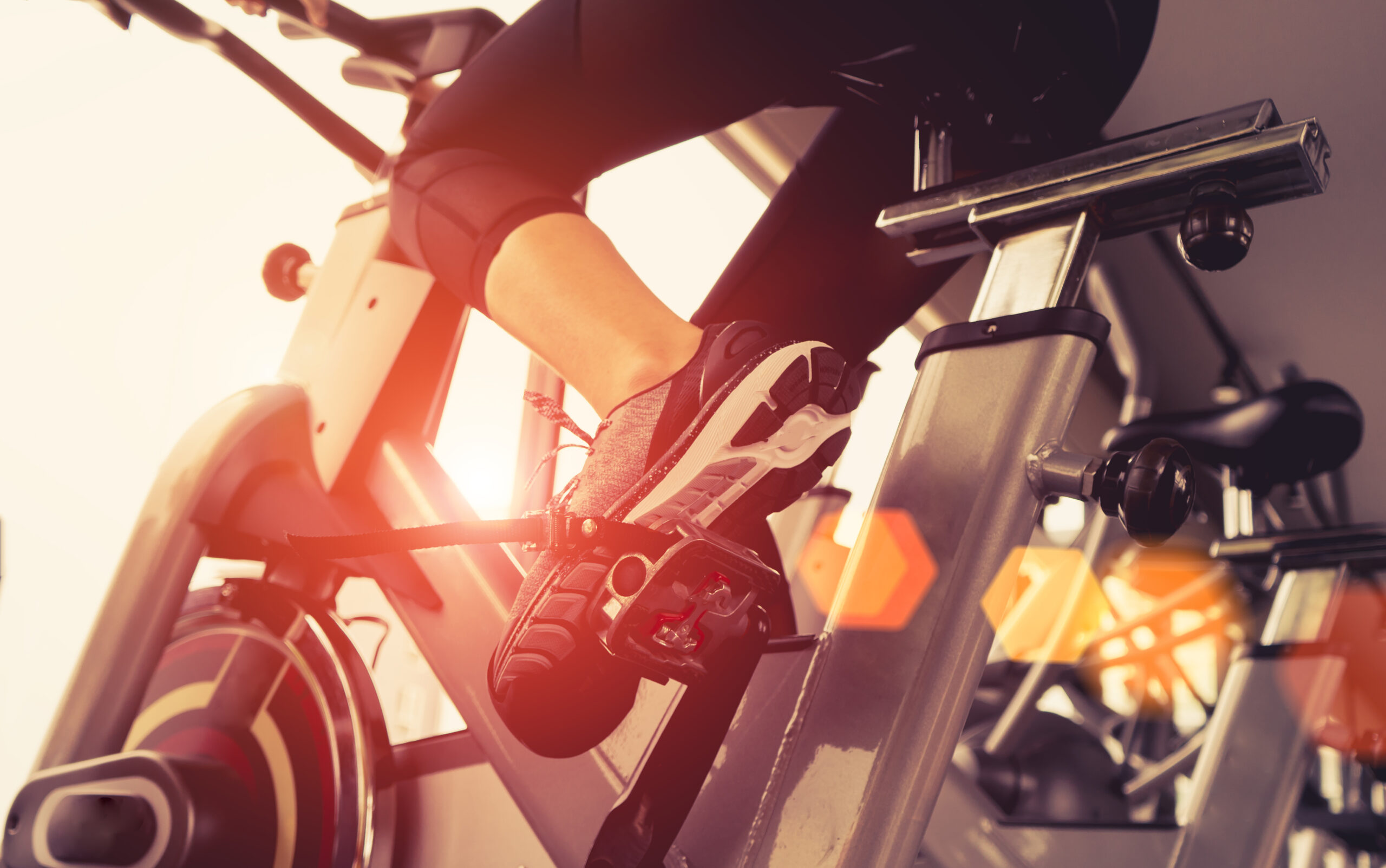Bowflex’s C6 and Sole’s SB900 are both top options for indoor cycles in the $1000 price range, but they’re quite different when you think about it.
Both bikes score well when it comes to performance specs, but the C6 is designed with a few extra features that make it perfect for pairing with streaming apps, while the SB900 is a little more old school.
Ultimately, when choosing between these 2 elite bikes, it really comes down to what you’re looking for, but it can still be a tough decision.
Don’t fret though, I got your back.
In this review, I’ll compare the Bowflex C6 and the Sole SB900 head-to-head with regards to all the most important specs and features these bikes have to offer.
After reading, you’ll know everything you need to in order to decide which bike is the right option for your home.
| Bowflex C6 | Sole SB900 | |
|---|---|---|
| Resistance | 40 lb flywheel 100 magnetic resistance levels | 35 lb flywheel 100 magnetic resistance levels |
| Frame | 112 lb assembled weight 330 lb weight capacity | 123 lb assembled weight 300 lb weight capacity |
| Warranty | 10 year frame 3 year parts/electronics 1 year labor | Lifetime frame 2 year parts/electronics 1 year labor |
| Features | Small LCD console 1 year JRNY membership Fully adjustable seat Fully adjustable handlebars Bluetooth arm band heart rate monitor included Pair of 3 lb dumbbells included Dual-compatible pedals Tablet holder Water bottle holders | Small LCD console Fully adjustable seat Fully adjustable handlebars Dual-compatible pedals Tablet holder Water bottle holder |
| Price | $999 | $1099 |
The Bowflex C6 vs The Sole SB900


Above images courtesy of Bowflex and Sole, respectively
I’m gonna be honest- I like Bowflex, but Sole is probably my favorite overall home fitness brand.
I like them so much because their machines are straightforward and they’re designed to last. And I love that they offer some of the best warranties on the market, but more on that in a bit.
Sole also has a pretty large selection of cardio equipment to choose from, with options in the affordable to moderate price ranges.
Bowflex obviously started with their home gyms, but they’ve also become well-known for their cardio equipment too lately.
And Bowflex also scores highly when it comes to the heavy-dutiness (I’m not sure that’s a real word) and quality of their products.
The C6 is 1 of 2 indoor cycles being offered by Bowflex (the other being the innovative VeloCore), while the SB900 is 1 of 2 being offered by Sole (alongside the SB1200).
The C6 and the SB900 are both very popular cycles and they both usually find themselves near the top of bloggers’ “best of” lists each year.
Resistance
I like to start my comparisons off with a rundown on the performance specs and since we’re talking spin bikes here, I think the resistance systems are a great place to start.
One of the great things about a quality spin bike is they are capable of providing a killer workout.
Of course, in order to do this, the bike has got to be able to provide enough resistance to provide a challenging workout.
Most home indoor cycles use weighted flywheels paired with either a friction brake or a magnetic resistance system to do this.
When it comes to weighted flywheels, having a heavier flywheel is beneficial because it builds more momentum as it spins, which reduces lag between pedal strokes.
The result is a smoother feel during workouts.
Heavier flywheels are also capable of providing more overall resistance because it takes more energy to get that flywheel moving.
The C6 comes with a 40 lb flywheel, which is quite impressive for any spin bike and the SB900 is packing similar heat with a 35 lb flywheel.
At these weights, I feel comfortable saying that both cycles come with pretty massive flywheels.
If you’re actively looking for a bike with a heavy flywheel, this alone might be enough reason to opt for the C6, but the SB900 is no slouch in this department either.
Personally, I don’t I could tell the difference between a 40 lb and 35 lb flywheel because both will offer very smooth rides.
Both bikes also use magnetic resistance systems, which are much more preferred over friction brakes, but there’s a pretty big difference between them.
The C6 comes with 100 levels of resistance (adjusted by turning dial) and you can digitally see what level you’re on with the included console.
The updated SB900 also comes with 100 levels, so there’s no real difference here.
Overall, both cycles come with heavy flywheels and 100 levels of magnetic resistance, but technically speaking, the C6 is packing a heavier flywheel.
Frame
Moving on, let’s compare frames.
I always like to get an idea of how stable and secure a bike will feel while riding, which can be difficult without being able to try it out first.
The next best thing though, is to look at the assembled weight because this tells you how heavy (duty) the bike is.
Seeing a heavier bike is a good thing because it’ll be less likely to rock or move during workouts.
With this in mind, the C6 weighs about 112 lb fully assembled, which is pretty solid for an indoor cycle in this price range.
The SB900 comes with an assembled weight of 123 lb though, which is even heavier.
Which is even more impressive when you consider that the C6’s flywheel is 5 lb heavier.
Even looking at photos of these 2 bikes, it’s pretty easy to see that the SB900 looks like a much thicker bike.
Which makes it interesting when we compare weight capacities because the C6 comes with a higher 330 lb weight limit compared to the SB900’s 300 lb limit.
I don’t doubt for a second that the SB900 couldn’t hold more weight than that, but that’s what Sole has tested it against, so there we go.
Regardless of what the weight limits are, I still consider the SB900 to be a much heavier duty bike, so if you’re a bigger individual or a home with multiple users, this is certainly something worth considering.
But overall, both cycles score well in the frame department.
Warranty
Regardless of what kind of exercise bike I’m looking at, I always stress the important of checking out the warranty because I think it tells you a lot about the quality of the bike.
As I write this, I know that rule isn’t always true though.
For example, the Peloton Bike is amazing and their warranty actually kinda sucks, so warranty and quality don’t always go hand in hand.
But generally speaking, nicer bikes tend to come with longer warranties.
Anyway, let’s take a look at the residential warranties offered on these 2 cycles.
Let’s start with Bowflex’s guarantee on the C6:
- 10 year frame
- 3 year parts/electronics
- 1 year labor
Ok, and here’s Sole’s warranty for their SB900:
- Lifetime frame
- 2 year parts/electronics
- 1 year labor
Ok, so very similar warranties here.
Sole’s lifetime frame guarantee is technically better than Bowflex’s 10 year guarantee, but to be fair- I don’t think anybody’s gonna complain if they “only” get 10 years out their bike.
Maybe I’m wrong.
Either way, it’s unlikely something’s going to go wrong with the frame anyway.
BowFlex offers an extra year on parts, which is nice, but Sole’s 2 year parts warranty isn’t bad for this price range.
And a year on labor is pretty standard stuff.
Overall, both brands offer nice warranties here, so it comes down to whether you prefer the lifetime frame warranty or the extra year on parts.
Features
Ok, time to talk features.
This shouldn’t take too long, since both of these bikes are pretty simple when it comes to the consoles, but let’s start with the C6 regardless.
The C6 comes with a small LCD screen that displays basic metrics like speed, distance, time, calories, and cadence.
That little console is also compatible with bluetooth heart rate monitors and Bowflex even includes an arm band with purchase.
As I mentioned earlier, that console also displays what resistance level you’re on.
You also get a free year of JRNY, Bowflex’s streaming fitness app, if you purchase the C6. Through JRNY, you get access to workouts, metric tracking, and virtual scenic rides.
The C6 comes with a tablet holder, so you can easily prop your tablet up there to access JRNY or other fitness apps like Peloton or Zwift.
The 100 level resistance system makes it really easy to use the Peloton app, by the way.
Otherwise, the C6 comes with a fully adjustable seat and handlebars, dual-sided pedals (SPD and toe cage), and a pair of 3 lb dumbbells, as well as dual water bottle holders.
Sole’s SB900 also comes with a small LCD console, but it’s not quite as nice as Bowflex’s.
It also displays time, distances, calories, and cadence, but it doesn’t look quite as attractive as Bowflex’s monitor (if you ask me).
It too is compatible with wireless heart rate monitors, but one isn’t included.
The SB900 is also bluetooth compatible with apps and Sole has their own fitness streaming app (Sole+) which gives you free access to instructor-led workouts, if you purchase a Sole product.
Otherwise, the SB900 also comes with a fully adjustable seat, fully adjustable handlebars, and dual compatible pedals.
There’s also a tablet holder and water bottle holder, but that’s about it.
Overall, the consoles on these 2 cycles are both pretty simple and they both come with very similar features.
Price
We’re coming down to the end of this comparison, so it’s probably about time to talk dineros.
At the time of writing this, these bikes come with the following full retail prices:
BowFlex C6: $999
Sole SB900: $1099
Ok, so these prices may vary a little depending on current promotions and whatnot, but the SB900 basically costs about $100 more than the C6.
Which makes it even harder to decide between these 2 pretty evenly-matched cycles.
Overall though, I think both bikes are priced fairly, considering everything each has to offer.
Other Considerations
I like to save this little area for any extra tidbits of wisdom I want to throw in before finishing the review.
In this case, I just want to say that Bowflex and Sole both come with great reputations as brands and both of these bikes are very highly reviewed by users.
Both brands come with some complaints regarding customer service, but neither has the awful customer reputation of say NordicTrack or ProForm.
Final Thoughts
Well, that about does it, time to wrap this thing up.
The Bowflex C6 and the Sole SB900 are both elite cycles with a lot of great specs and features.
That said, if I was buying one of these bikes today, I’d go with…
Sole’s SB900.
Yeah, I hate to go against BowFlex, but for me, I know I’d want the extra-heavy frame.
It’s a tough call though, especially considering BowFlex tosses in a free pair of dumbbells.
In reality, these 2 bikes are really similar and they both have a lot to offer for this price range.
In terms of performance, the C6 comes with a heavier flywheel, but again, the SB900 is a bigger, heavier machine.
In other words, the SB900 is more like an old school elite cycle.
Overall, both bikes are awesome and there really isn’t a wrong option here, but when it comes to Bowflex’s C6 vs Sole’s SB900, I’m going with the SB900.




